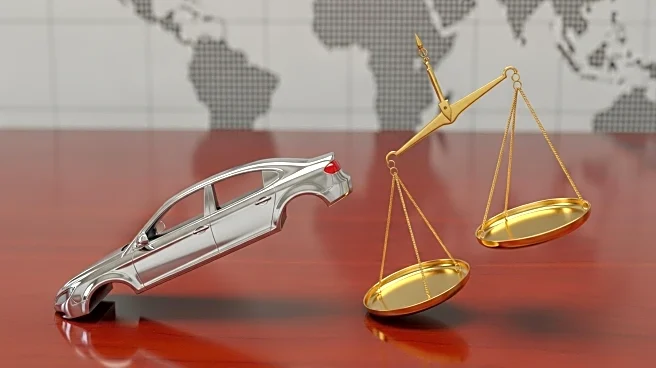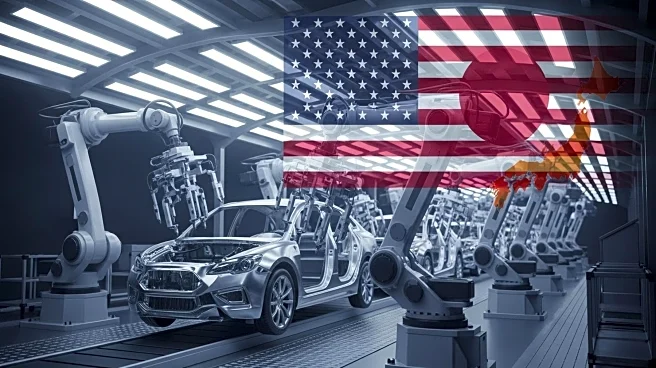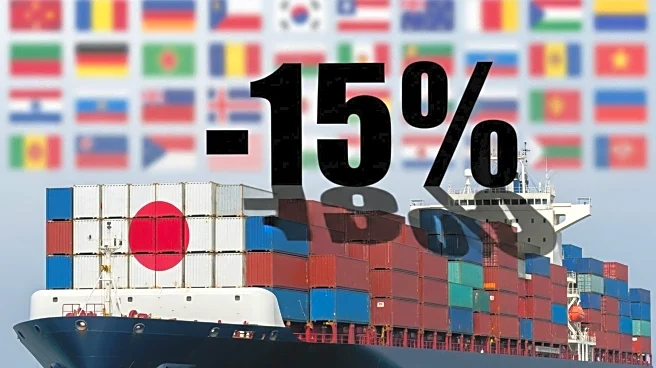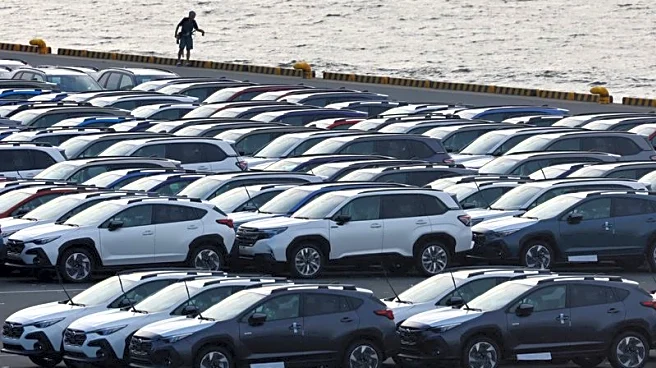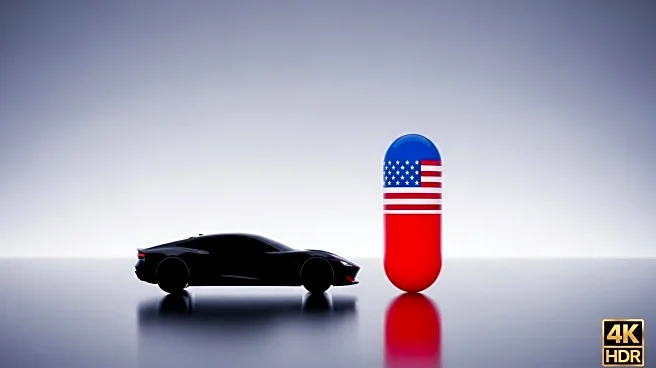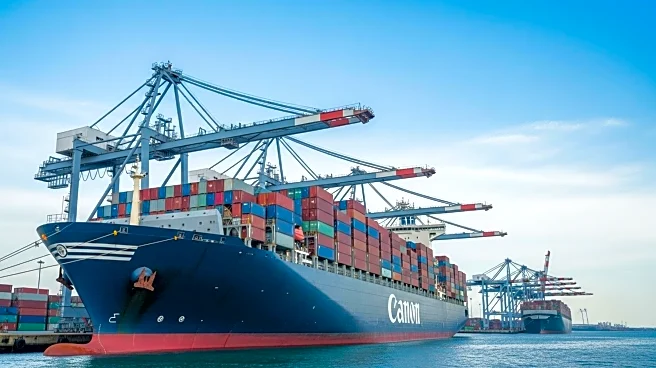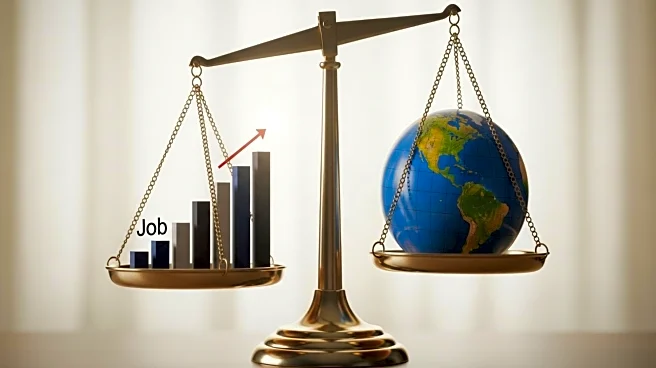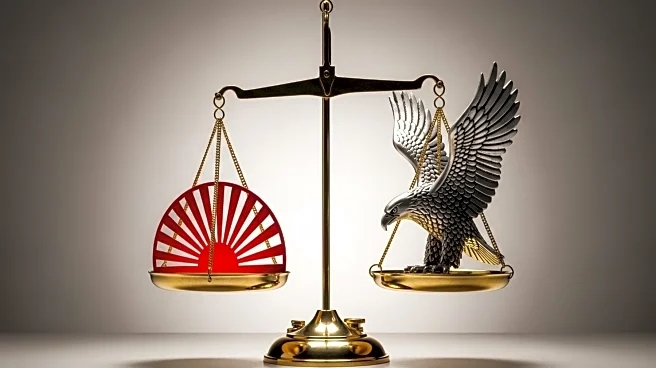What's Happening?
President Trump has signed an executive order reducing tariffs on Japanese car imports from 27.5% to 15%. This decision follows months of negotiations between the U.S. and Japan, aiming to ease trade tensions and provide relief to Japanese automakers like Toyota, Honda, and Nissan. The agreement also includes Japan's commitment to invest $550 billion in U.S. projects and increase purchases of U.S.-grown rice by 75%. The reduction in tariffs is expected to help reduce the U.S. trade deficit with Japan and open new opportunities for American businesses.
Why It's Important?
The reduction in tariffs is significant for the automotive industry, particularly for Japanese car manufacturers who rely heavily on the U.S. market. Cars account for about 20% of Japan's total exports, making the U.S. a critical market. The tariff cut is expected to alleviate financial pressures on Japanese automakers, who have warned of substantial costs due to previous tariffs. This move also strengthens economic ties between the U.S. and Japan, potentially leading to increased bilateral trade and investment.
What's Next?
The agreement may lead to further negotiations on trade between the U.S. and Japan, focusing on other sectors such as agriculture and pharmaceuticals. The reduction in tariffs could prompt other countries to seek similar agreements with the U.S., potentially reshaping global trade dynamics. Stakeholders in the automotive industry will closely monitor the impact of the tariff reduction on sales and production costs.
Beyond the Headlines
The tariff reduction reflects broader geopolitical strategies, as the U.S. seeks to balance trade relationships amid global economic shifts. It highlights the importance of strategic partnerships in international trade, where concessions in one area can lead to gains in another. The move may influence other countries to reconsider their trade policies with the U.S., fostering a more collaborative approach to global trade.


